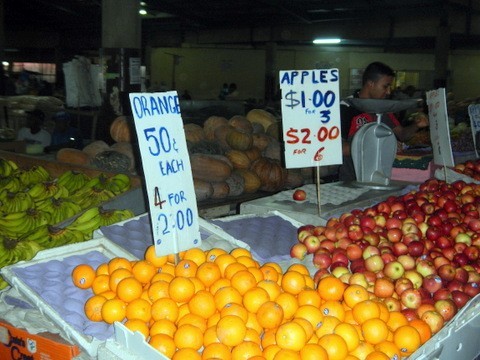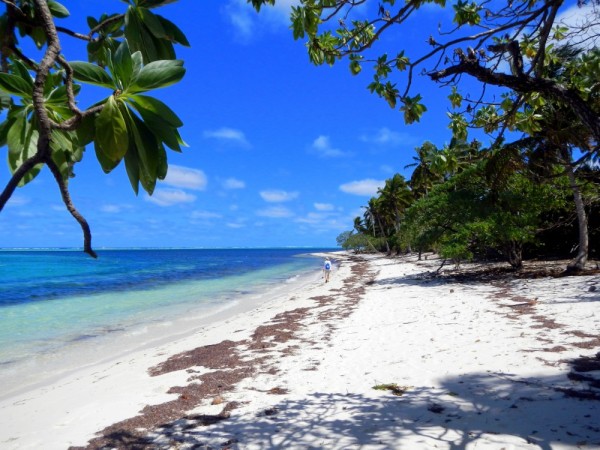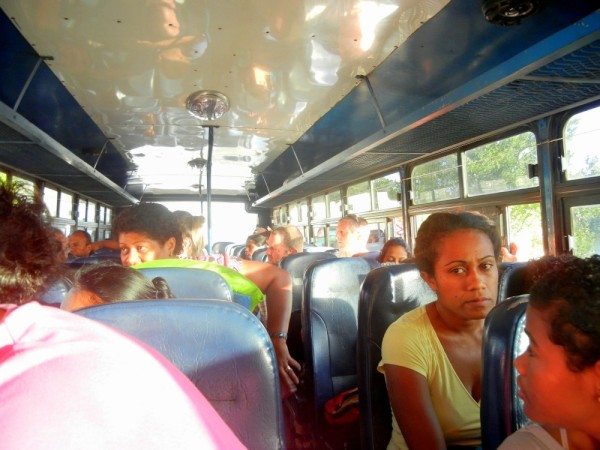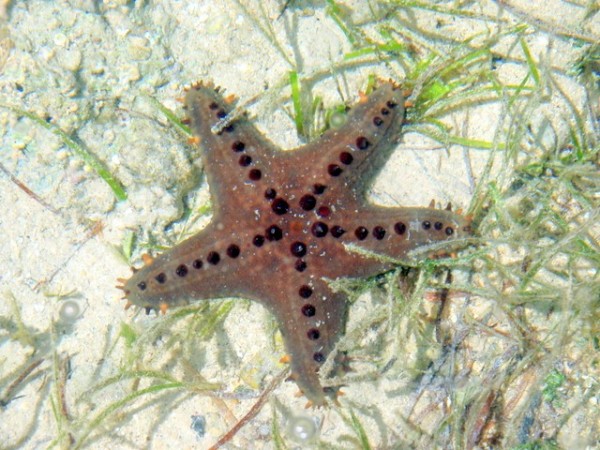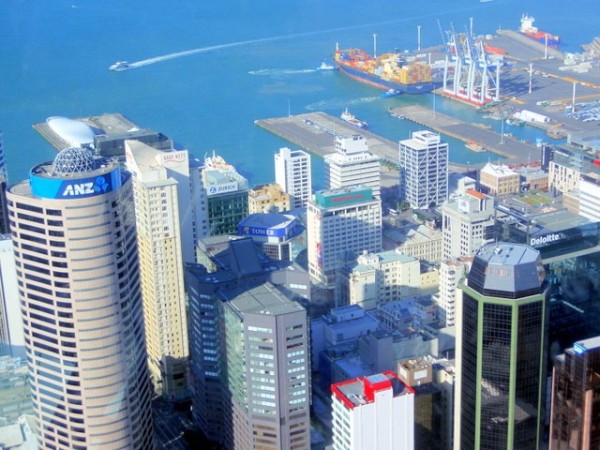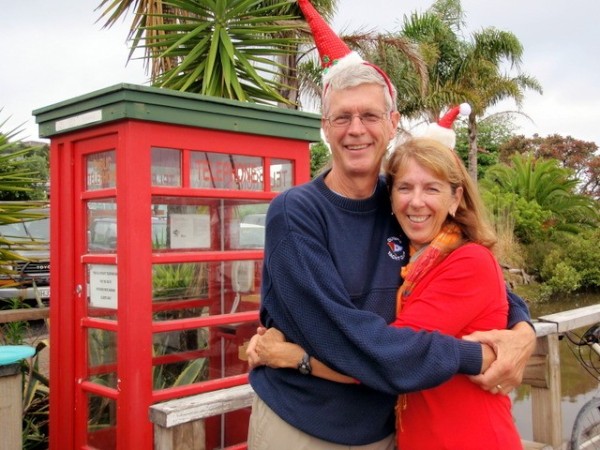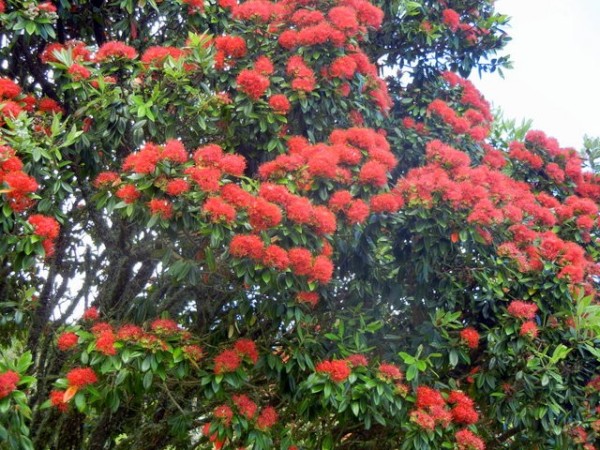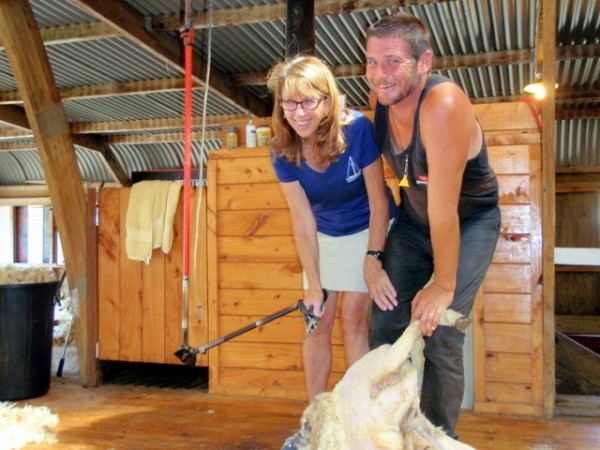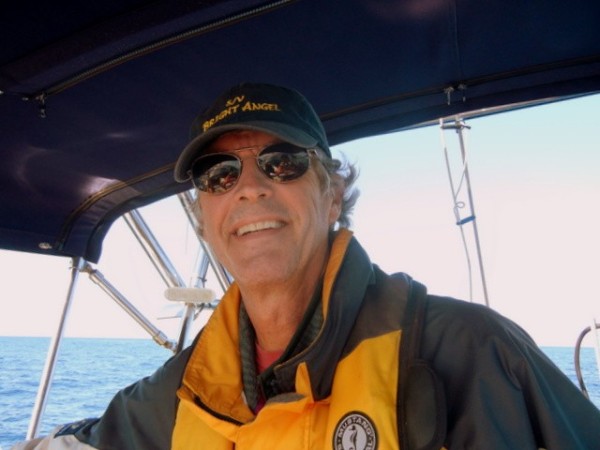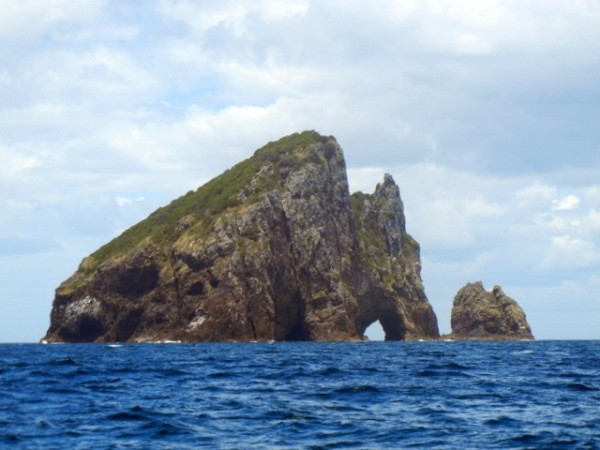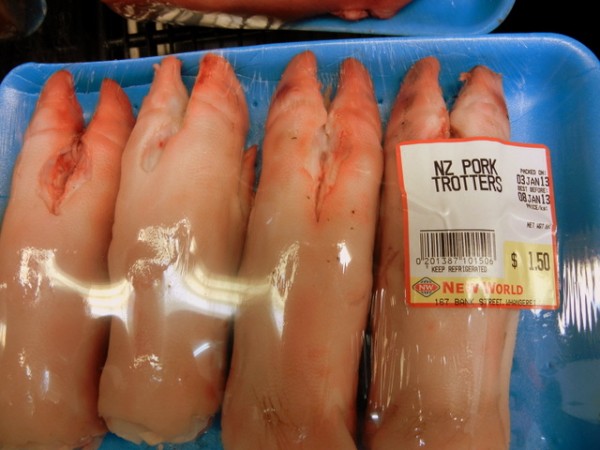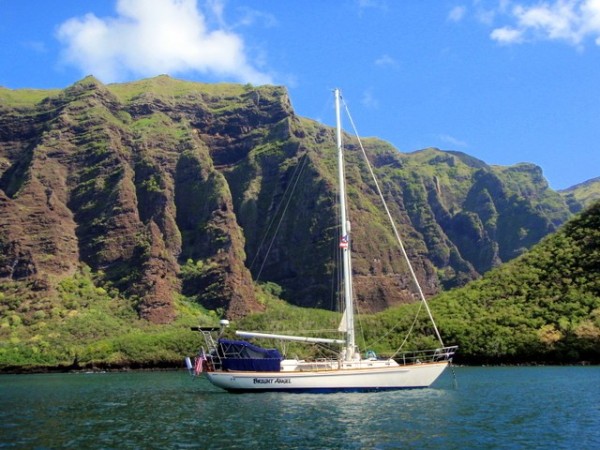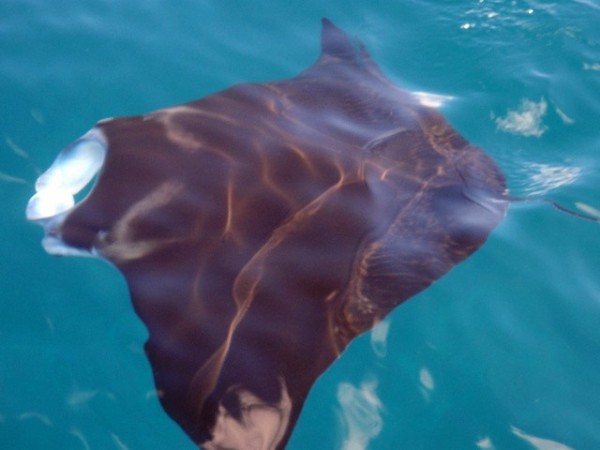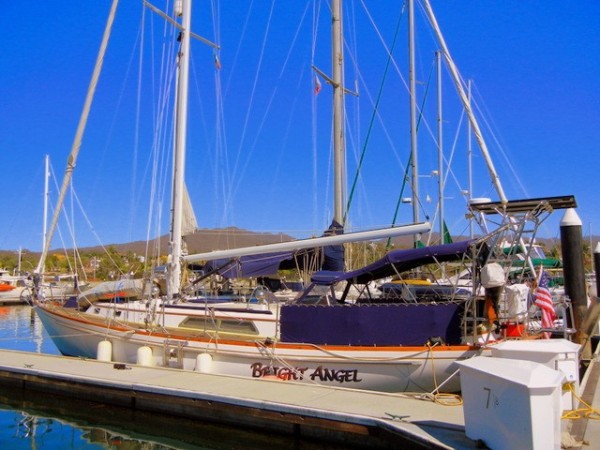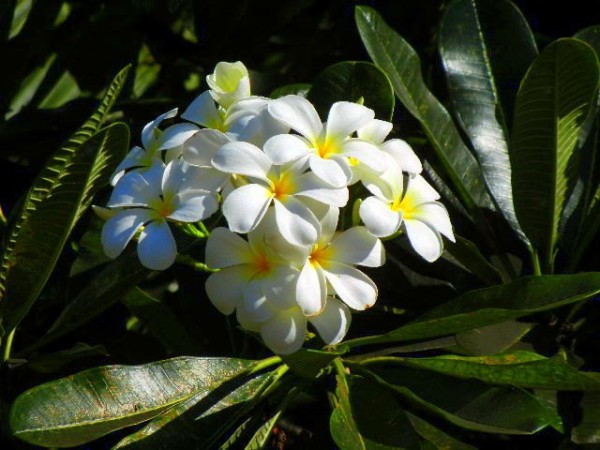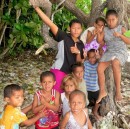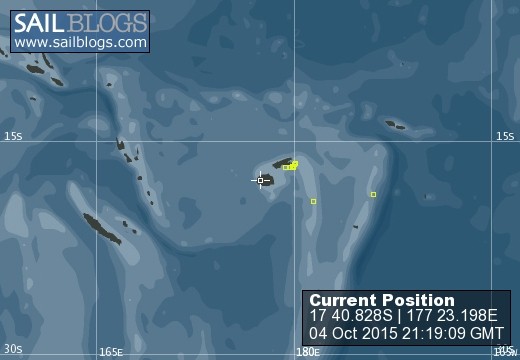
SailBrightAngel
The Adventure Continues
20 October 2013 | Fulanga, Southern Lau Group, Fiji
20 October 2013 | Village of Maunaithaki, Fulanga, Lau Group, Fiji
20 October 2013 | Village of Maunaithaki, Fulanga, Lau Group, Fiji
20 October 2013 | Southern Lau Group, Fiji
29 September 2013
10 August 2013 | Savusavu, Vanua Levu
06 July 2013
06 July 2013
06 July 2013
03 July 2013
02 July 2013
01 July 2013
29 June 2013
24 June 2013
13 November 2012 | Vava'u, Tonga
04 September 2012 | Bora Bora, French Polynesia
31 July 2012 | Uturoa, Raiatea
14 June 2012 | Tiputa, Rangiroa, Tuamotus
Bula Vinaka, Fiji!
10 August 2013 | Savusavu, Vanua Levu
Bob
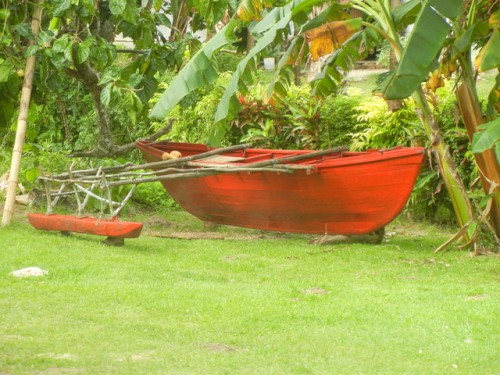
After six weeks (give or take some “island time”) of cruising in Fiji, we were running low on coffee, beer, and wine, so it was time to head back to Savusavu for some R&R – repairs and resupply; well, there really wasn’t anything that needed repairing, but there is always maintenance to do, and that is usually easier when you can head to the Yacht Club bar for drinks with other cruisers “after work” and then go to a local restaurant for dinner!
On our first Fiji cruise we visited Viani Bay ,Taveuni Island, Fiji’s third largest island, that included a hike to some beautiful waterfalls, Buca (pronounced “Butha”) Bay, where we performed our first sevusevu, and the islands of Kioa and Rabi (pronounced “Rambi”), where we expanded our vocabulary beyond our rudimentary Fijian to include a few words of Tuvaluan and Banaban because the residents of these islands are not native Fijians, but displaced islanders from Tuvalu and Ocean Island, in the Gilberts, respectively.
But before we take you on our cruise, let’s backtrack a bit and mention a few of the things we did in Savusavu after our arrival from New Zealand and before we went out cruising. After clearing in to the country and getting our visitor and cruising permits (yes, there is bureaucracy in Paradise!) and catching up on our rest, we set out to soak up some of the “flavor” of the country we would be visiting for the next five months. Savusavu, it turns out, is a great place to get oriented without too much culture shock! There are three “marinas” – two with only limited dock space for boats; most boats tie to one of the marinas’ mooring buoys. The Copra Shed Marina is the crown jewel, with clean, modern facilities, a small chandlery, a handicraft shop, a currency exchange, a tour center, a café and restaurant (both with great food at reasonable prices, and homemade ice cream!), and a Yacht Club bar that is the local watering hole for cruisers and expats. There are several other restaurants in town, two rather well stocked supermarkets, a farmers & fish market, a couple of gas stations, and an assortment of other stores selling everything from hardware to underwear – all along one street. The stores are well stocked, as the supply ships from Suva (the capital of Fiji) call here several times a week.
One of the first things that struck us about Fiji is how friendly and outgoing the people are, especially the native Fijians. The population of Fiji is comprised mainly of natives and Fijian Indians, who were brought here as indentured servants by the British to work the plantations and sugar cane fields. As you walk down the street, nearly everyone greets you with a smile and “Bula” or “Bula, Bula” – Fijian for hello. (In the villages, somewhat removed from “civilization,” as foreigners we are often greeted with a more formal “Bula Vinaka.”) One day, as Linda and I were sitting by the sidewalk in a café, a Fijian woman stopped to chat with Linda. They talked for about five minutes, and after the woman left I asked Linda if she had met her before; “No.” The Indians, who run many of the shops and restaurants, are a bit more reserved, but still friendly. The population of Savusavu is predominantly Fijian. One day we took a bus trip to Labasa (pronounced “Lambasa”), the largest town on the island of Vanua Levu located on the north coast, where the population is predominantly Indian. Linda said “We don’t need to go to India now; we have already been there!” (For more on our trip to Labasa, see Linda’s post on the Bus Ride to Labasa).
When we arrived in town there was a festival of sorts going on, complete with a ferris wheel, food venders, and live music and entertainment on an outdoor stage – including female impersonators. Too bad our knowledge of the Fijian language is so limited, because the songs accompanying the he/she act were eliciting uproarious laughter from the crowd, especially from young ladies. But by far and away the best show in town was put on by the Fijian Police Marching Band! As musicians, these guys were nothing short of fabulous, and as they marched down the street they would stop and dance with people from the crowd (as they played their instruments), often rather suggestively! What fun!
We attended a cruising seminar put on a by Curly Caswell, an Australian expat who spent many years sailing in Fiji. Navigation amongst the reefs and shoals in Fiji can be a bit tricky, so it was good to soak up some “local knowledge.” Another Aussie conducts tours of his “Flora Tropic Gardens” and we spent a lovely morning there with several other cruisers learning more than we ever thought there was to know about rare and endangered palm species! We also spent time visiting the market, most of the shops in town, and many of the restaurants – where the fare (as does the quality) varies widely, with some Chinese and an emphasis on Indian. The best food in any place we visit, though, is still served aboard Bright Angel.
When it was time to head out cruising, we took off along the south coast of Vanua Levu to Viani Bay, going through a pass in the reef with the aid of Curly’s waypoints. When we got there, there were seven other boats at anchor or on a couple of moorings provided by Jack, the local Fijian dive, tour and entertainment guide, and self-appointed “mayor of the bay.” It is interesting to note that we knew the people on all of the boats – three from the US, two from Canada, one from Great Britain, and one from Finland; we met two of them in Mexico, and the rest along the way across the Pacific last year – this is what we mean when we talk about the “cruising community.”
Viani Bay is a beautiful place, well protected from the prevailing weather, and large enough to accommodate many boats. Where we were anchored there are mangroves and dense jungle-like trees and vegetation along the shore (along with palm trees, of course) and across the bay the most beautiful grass covered hills. Looking out across the reef and Somosomo Strait you could see Taveuni Island in the distance; a large, densely wooded island that always seemed to have a “cloud cap” and some of the most unusual rainbows “radiated” along the hillsides – Viani Bay had some awesome rainbows of its own as well.
There is no village in Viani Bay, but there are a number of Fijian families living in scattered settlements or individual homes along the miles of shoreline. There is also a primary school at the head of the bay with over 100 students. Every day the “school boat”- a 20+ foot punt with an outboard - would go by with dozens of kids from around the bay and surrounding countryside, and not a life jacket in sight! We heard a drum beating early in the morning and throughout the day. Later, when we visited the school, we learned that the traditional drum, a large hollowed-out log at the school, was used to get the kids up (at 5:30 am), to remind them to brush their teeth (at 8:00 am), and for the start of school (at 8:30 am). Throughout the day the drum was used to signal recess, lunch time, and when school let out for the day. During our visit to the school with some of the other cruisers, the kids were out of class and having “PE” – running relay races, playing rugby, and hoop ball (like basketball, but without a backboard). One of the teachers gave us a tour of the class rooms, and then some of the kids placed a large mat on a grassy knoll overlooking the playing field for us to sit and watch the games. After the relay races, the older kids sat and patiently waited for the younger kids to play rugby. When the older kids took the field, they were soon joined by several of the fathers, and the rugby game got pretty exciting – these guys were good!
Jack Fisher’s family once owned most of the land around the bay. His father, who was of mixed Fijian and European blood and had been a seafarer in his day, has passed away, but Jack continues the family tradition of welcoming cruisers to “his bay.” Jack, who is something of a local legend, provides cruisers with a number of services: for example, he will take you on your boat out to any of the local dive and snorkel sites, then watch after your boat (either anchored or tied to one of the dive site buoys) while you are in the water. (The reefs off Viani Bay offer some great diving and snorkeling; one of the sites, the “White Wall” – is among the top 10 dive sites in the world!) Jack has a standard charge for his service - $10 Fijian (about $5.60 US) per person. Our visit to Taveuni Island was a Jack trip: Jack piloted The Rose out the reef (without waypoints!) and across Somosomo Strait to an anchorage off a town, and then stayed on the boat all day while the 15 or so cruisers (from most of the boats in Viani Bay) went to the local markets for provisions, and then took in some of the local sights; Linda and I went with a number of other cruisers in a van that met us on shore (Jack had arranged this) to the spectacular Tavoro Waterfalls – a Fijian National Heritage Park. Jack’s charge for his services - $10 per person. One night while we were there Jack put on a “lovo” – a traditional Fijian feast with food cooked in the ground over hot rocks and covered in palm fronds. The cost - $10 per person, and the food was delicious! Jack would also row out to the cruising boats in his dinghy and collect garbage (always a problem on a cruising boat away from port for any length of time!)- for free; the hook was, he would have fresh fruit, like a bunch of bananas or coconuts, for which he would ask for a donation to his daughter’s nursing school fund – how could you refuse? Jack loves to talk, and is always ready with a story. On the way back from Taveuni, I engaged him in conversation about religion and politics; boy, did I get an earful!
One day Linda and I went on one of Jack’s guided dive/snorkel trips to the “Purple Wall” with a New Zealand couple. The Kiwis, who are divers, went in their dinghy with Jack, and Linda and I, who snorkel but don’t dive, followed in our dinghy. The plan was Jack would lead us to the site, the divers would go in first, then we would tie our dinghy to theirs and we would go snorkeling while Jack drove back and forth with the dinghies until we were all back out of the water; this was outside the reef, with no place to anchor and no dive site buoy to tie to. On our way out, we felt some misgivings about being outside the reef in the dinghy, as the waves and swell were up; but Linda and I agreed to stretch our comfort zone a bit and give it a go. The snorkeling was fine (but not the best – the Purple Wall is primarily a dive site) and we had to work hard at times against the current to stay away from the shallow reef where the waves were breaking. On our way back in I remembered some discussion of Jack in Curly’s seminar – about things it was best not to let him do. When we got back to our boat, I checked my notes; Curly’s advice was not to let Jack take snorkelers outside the reef, or dinghies outside the reef, or divers and snorkelers on the same trip. Wow! We hit the trifecta! But we survived.
We spent about 10 days in Viani Bay before moving on to Kioa Island, off the SE coast of Vanua Levu. There is one decent anchorage in a small bay on the south coast of Kioa off the only village on the island; the anchorage is open to the south, but generally protected from prevailing SE winds. We anchored quite near the shore at the head of the bay, as the depths were quite deep and there were reefs along the east and west sides of the bay; we dropped anchor in 60 feet, and were lying in 20 feet at the end of our scope – the amount of chain we had out.
The residents of Kioa are Fijian citizens now, but were originally from the island of Vaitupu in Tuvalu; they moved to Kioa in December 1947, because of population pressures on their home island. Thirty one people made the move in 1947, only one of whom survives; today there are over 700 residents of the island, most are descendants of the original displaced settlers. The island was purchased with funds Tuvalu earned from the US military in WWII. The residents of Kioa maintain their Tuvaluan culture and language, but they also speak English. They fish from dugout outriggers, and the women of the village are known for their handicrafts – mainly weaving. There is a primary school in the village (taught in English, as required by Fijian law), but for compulsory secondary education most students go to Taveuni – about 15 miles away by boat. There is small clinic in the village, staffed by a Fijian nurse. The village is governed by an elected council and an elected council chairman. When we arrived, we paid a courtesy visit (as is expected) on Chairman Tai Tai, and offered a small donation for the school fund, and some tea and cookies for the council staff. The Chairman graciously accepted our gifts, and welcomed us to his village – we then had permission to use the anchorage, to walk around the village, and along the beaches.
We were fortunate to be on Kioa for the opening of a new community library, located in the school. The dedication ceremony was conducted in the traditional village longhouse and included orations and skits by the school kids – lots of fun! Linda and I, along with the other cruisers in the bay, a couple from Victoria, BC, were invited “Special Guests” for the ceremony; the “Honored Guest” was the village nurse. After the ceremony, we were invited to lunch with the council in their offices – fish curry with a huge pile of rice (quite good, really). Then it was off to the school for the ribbon cutting ceremony at the new Community Library. The next day, the ladies of the village set up their craft shop for Linda and me. We bought some weavings, a tapa (painted cloth made by pounding wood) and a couple of placemats; the quality was fair, but not as nice as what we had seen in Tonga.
The third night we were at Kioa, the wind came up – to about 20 knots – and was blowing out of the south southeast, so the anchorage got quite bumpy. I let out some more anchor chain, only to find we were then lying in 10-12 feet of water – not good (there are coral heads, known as “bommies” around). So, I took the extra anchor chain back in, and early that morning we weighed anchor and headed for a more secure anchorage a little further to the west off Vanua Levu. We regretted cutting short our visit to Kioa, but the weather was predicted to get even snarlier in the next few days. Such is life on the water!
We next dropped the hook at the head of Buca Bay, off a Seventh Day Adventist school and church and just down the road from Loa Village. It was mid-afternoon on a Saturday and the singing from the church was absolutely beautiful. We just took it easy that day, and on Sunday, too (Fiji, for the most part, takes the day off on Sunday), before launching the dingy on Monday to head into the village to do sevusevu. This is a ceremony very much ingrained in Fijian culture, and is expected of any visitor to a village or area (including waters) overseen by a village with a hereditary chief. In sevusevu, visitors offer a gift of yanqona (kava root) to the Chief and ask permission to visit, anchor in the bay, walk the beaches, or whatever one intends to do. The degree of formality with sevusevu varies from village to village (and in Loa it was thankfully quite informal – thus making our first time less stressful), but always follows basic protocols: visitors seek out the Turanga-ni-Koro (village mayor, or second in command) to act as a representative in dealing with the Chief, and visitors always dress appropriately, which includes wearing a sulu – a mid-calf wrap-around skirt (yes – that includes men!). The Turanga-ni-Koro takes the visitors to see the Chief in either his house, or a meeting hall, or wherever the ceremony is usually conducted in the village. Then, when everyone is seated in their designated place, cross-legged on the floor on mats (women sit with their legs to the side), the ceremony begins. The Turanga-ni-Koro introduces the visitors to the Chief (or the Chief’s representative, if he has one) and explains why they there and what they want to do, etc., then he presents the gift of kava by sliding it across the floor to the Chief (or his representative) and if it is picked up and accepted, you are “in.” The Chief responds with a formal speech, that includes granting permission to do whatever the visitor has asked to do (anchor in their bay, go fishing, walk the beaches of in the village, etc.). With each permission granted, there is a formal clapping of hands a certain number of times, and the Turanga-ni-Koro responds with “Vinaka” (thank you). The entire ceremony is conducted in Fijian, and in some (more formal) ceremonies actually involves preparing the traditional kava drink (kava root, a mild intoxicant, is ground up and strained through a cloth with water), in which (usually) men only then participate in drinking, until it is gone (sometimes more than one batch is brewed up – heaven forbid!). When the ceremony is over, the visitors are considered member of the villages, and (for us, anyway) the conversation reverts to English. For our sevusevu in Loa Village, we asked a friendly lady, Tia, to take us to the Turanga-ni-Koro, but he was unavailable (he had gone to Savusavu), so she took us to another gentleman who agreed to act as our representative. He took us to the Chief’s house where the ceremony took place, without kava drinking (I can tolerate kava, but would much rather drink beer!).
During the remainder of our stay in Buca Bay, we visited the Seventh Day Adventist School, another village further down the road, and a beautiful medical and dental clinic provided and operated by a wealthy California couple. The clinic is fully equipped for surgery, optometry, and dental work. The services – performed by practitioners from around the world who donate their time (and who are put up in grand resort-like style while there) – are provided free to Fijians, who come from all over Fiji when services they need are being offered. It was quite inspiring. If you interested, check out their website at www.natuvu.org .
After leaving Buca Bay, we visited Rabi Island, just north of Kioa. Like Kioa, Rabi is populated not by native Fijians, but by displaced Pacific Islanders; on Rabi the people are Banabans from Ocean Island in the Gilbert Islands, now a part of Kiribati. In the early 1900’s, the British started mining phosphate on Ocean Island. By 1945 the island was pretty chewed up by the mining and the Banabans had suffered horrible atrocities at the hands of the Japanese during WWII. The survivors, about 400 all total, were relocated to Rabi after the British Phosphate Company purchased the island from the Fijians. Today, there are several thousand Banabans on Rabi living in a number of villages and settlements around the island.
We first dropped anchor in Katherine Bay, on the south side of Rabi, near the village of Baukoniki, where there is a most impressive (huge) church on a man-made plateau (literally a hand-made plateau – carved out of a hillside with pick and shovel over many years). Near the mangroves at the head of the bay where we anchored there was a small clearing with an open tin roofed meeting hall; it was a Sunday afternoon, and there were about two dozen people in the hall singing beautifully. As we sat and listened from the cockpit of Bright Angel, two men rowed out in an outrigger canoe and asked us to join them. It turns out this simple meeting hall was the Catholic church (the huge church overlooking Baukoniki is a Methodist church), and the man who invited us to join them was the priest. They were done with their service, he said, and were now just socializing – singing and drinking kava. We had a delightful time that afternoon, talking (they were all quite curious about sailing so far to get there), singing (they taught us to sing several songs, including one that involved clapping and tapping your neighbors), dancing (during one of the songs, accompanied by a very talented guitar player in the group, the matriarch of the group asked me to dance, and one of the handsome young men was quick to follow suit with Linda), and – yup – drinking kava (even Linda drank some!). We had learned a few words of Banaban from some cruiser friends who had just recently visited Rabi, and our hosts were duly impressed; they taught us few more words (they also speak English) before we headed back to the boat, flush with such a grand welcome to Rabi.
The next day we took the bus – well, a truck really, with a covered bed with a bench seat on each side – into Nuku, the “capital” of Rabi, to “check-in” with the local Rabi Police. The ride to Nuku was a true cultural experience, that started out with our waiting for the hour and a half late truck in the home of the Catholic priest; actually, it was his mother’s home, the matriarch, but it appeared that most of the brothers and sisters lived there, too – at least, most of them were there while we waited for the truck.
When we finally got on the truck for the hour long ride to Nuku, the cab and the back was already full; by the time we made it to Nuku, it was grossly overcrowded with people that had gotten on along the way. It was somewhat disconcerting that one of the bench seats had come loose, and as the truck bounced along the rutted dirt road and went up and down the hills, the seat full of people went on a walkabout. During the “layover” in Nuku, before the return trip to Baukoniki later that day, the seat was welded back into place. However, no more than five minutes out of town on the way back, the other seat broke, and one end (that I was seated on with a couple of other gentlemen) fell to the floor. We all stood for a while, holding on to whatever we could, until the driver stopped at a construction site and borrowed a few concrete blocks to shore up the seat – all was well again! The truck was pretty much full when we left Nuku, but by the time we picked up a load of kids at the high school, there was barely room to breathe let alone move; and kids were standing on the bumper, hanging onto the tailgate – I kid you not!
A couple of days later, we were making plans to leave Katherine Bay and head up to Albert Cove on the north end of Rabi. There are a couple of thatched homes but no village at Albert Cove, just a picture perfect anchorage with palm tree lined white sand beaches and great snorkeling on the fringing reef. But before we left, we wanted to say goodbye to our friends from the Catholic church. We put together a few gifts (some cans of corned beef – a big favorite of the islanders – and Oreo cookies) in pretty cloth bag Linda had sewn, a Bright Angel baseball cap for the priest, and a $50 donation for their church (in a sealed envelope). We went to their home (where we had waited for the truck) and presented our gifts, telling them it was a small token of our appreciation for their friendship, and for having so graciously invited us into their home and church. The matriarch was not there, but we asked that they express our thanks to her, as well. They then performed a traditional Banaban ceremony in accepting our gifts that involved a solemn recitation and clapping – it was quite moving. We told them we would be leaving later that morning for Albert Cove if the skies cleared (it was cloudy, and we wanted clear skies for better visibility entering the reef), or perhaps the next day.
Later that afternoon it was still cloudy, and we were still in Katherine Bay. Linda had decided to bake bread and was fully engaged in that task when an outrigger canoe approached with the priest and one of his brothers. We invited them aboard, and began making small talk – they gave us no express reason for being there (which seemed a little odd); maybe they just wanted a closer look at our “yacht” before we left. Ah, but soon it all became clear – another outrigger approached, bearing the matriarch, her daughter, the priest’s wife and her daughter (the matriarch’s granddaughter); they were followed by yet another outrigger with two more men from the family. The matriarch had brought had us gifts – as mementos of them, she explained. She opened a cloth bag and took out not one, but four beautiful rugs, made with crocheted backings and knotted pieces of brightly colored cloth. We were speechless; we thanked them profusely and continued to entertain them for another hour or so before they left – me with the men, talking about boat stuff and Linda with the women in the galley, as she tried to make the best of the bread baking exercise! Even without the rugs, we would not soon forget that wonderful family on Rabi!
We spent a few days at Albert Cove relaxing, beachcombing, and spending time with some cruising friends who joined us there – before heading back to Savusavu. Now, with just over a week of being “back in the city” – we are ready to head out on another cruise. This time, the destination is Vulaga (pronounced Fulanga) – a small island in the southern Lau Group – about 200 miles south and east from Savusavu – and by any and all accounts one of the crown jewels of Fiji, if not the South Pacific. Stay tuned for our account!
On our first Fiji cruise we visited Viani Bay ,Taveuni Island, Fiji’s third largest island, that included a hike to some beautiful waterfalls, Buca (pronounced “Butha”) Bay, where we performed our first sevusevu, and the islands of Kioa and Rabi (pronounced “Rambi”), where we expanded our vocabulary beyond our rudimentary Fijian to include a few words of Tuvaluan and Banaban because the residents of these islands are not native Fijians, but displaced islanders from Tuvalu and Ocean Island, in the Gilberts, respectively.
But before we take you on our cruise, let’s backtrack a bit and mention a few of the things we did in Savusavu after our arrival from New Zealand and before we went out cruising. After clearing in to the country and getting our visitor and cruising permits (yes, there is bureaucracy in Paradise!) and catching up on our rest, we set out to soak up some of the “flavor” of the country we would be visiting for the next five months. Savusavu, it turns out, is a great place to get oriented without too much culture shock! There are three “marinas” – two with only limited dock space for boats; most boats tie to one of the marinas’ mooring buoys. The Copra Shed Marina is the crown jewel, with clean, modern facilities, a small chandlery, a handicraft shop, a currency exchange, a tour center, a café and restaurant (both with great food at reasonable prices, and homemade ice cream!), and a Yacht Club bar that is the local watering hole for cruisers and expats. There are several other restaurants in town, two rather well stocked supermarkets, a farmers & fish market, a couple of gas stations, and an assortment of other stores selling everything from hardware to underwear – all along one street. The stores are well stocked, as the supply ships from Suva (the capital of Fiji) call here several times a week.
One of the first things that struck us about Fiji is how friendly and outgoing the people are, especially the native Fijians. The population of Fiji is comprised mainly of natives and Fijian Indians, who were brought here as indentured servants by the British to work the plantations and sugar cane fields. As you walk down the street, nearly everyone greets you with a smile and “Bula” or “Bula, Bula” – Fijian for hello. (In the villages, somewhat removed from “civilization,” as foreigners we are often greeted with a more formal “Bula Vinaka.”) One day, as Linda and I were sitting by the sidewalk in a café, a Fijian woman stopped to chat with Linda. They talked for about five minutes, and after the woman left I asked Linda if she had met her before; “No.” The Indians, who run many of the shops and restaurants, are a bit more reserved, but still friendly. The population of Savusavu is predominantly Fijian. One day we took a bus trip to Labasa (pronounced “Lambasa”), the largest town on the island of Vanua Levu located on the north coast, where the population is predominantly Indian. Linda said “We don’t need to go to India now; we have already been there!” (For more on our trip to Labasa, see Linda’s post on the Bus Ride to Labasa).
When we arrived in town there was a festival of sorts going on, complete with a ferris wheel, food venders, and live music and entertainment on an outdoor stage – including female impersonators. Too bad our knowledge of the Fijian language is so limited, because the songs accompanying the he/she act were eliciting uproarious laughter from the crowd, especially from young ladies. But by far and away the best show in town was put on by the Fijian Police Marching Band! As musicians, these guys were nothing short of fabulous, and as they marched down the street they would stop and dance with people from the crowd (as they played their instruments), often rather suggestively! What fun!
We attended a cruising seminar put on a by Curly Caswell, an Australian expat who spent many years sailing in Fiji. Navigation amongst the reefs and shoals in Fiji can be a bit tricky, so it was good to soak up some “local knowledge.” Another Aussie conducts tours of his “Flora Tropic Gardens” and we spent a lovely morning there with several other cruisers learning more than we ever thought there was to know about rare and endangered palm species! We also spent time visiting the market, most of the shops in town, and many of the restaurants – where the fare (as does the quality) varies widely, with some Chinese and an emphasis on Indian. The best food in any place we visit, though, is still served aboard Bright Angel.
When it was time to head out cruising, we took off along the south coast of Vanua Levu to Viani Bay, going through a pass in the reef with the aid of Curly’s waypoints. When we got there, there were seven other boats at anchor or on a couple of moorings provided by Jack, the local Fijian dive, tour and entertainment guide, and self-appointed “mayor of the bay.” It is interesting to note that we knew the people on all of the boats – three from the US, two from Canada, one from Great Britain, and one from Finland; we met two of them in Mexico, and the rest along the way across the Pacific last year – this is what we mean when we talk about the “cruising community.”
Viani Bay is a beautiful place, well protected from the prevailing weather, and large enough to accommodate many boats. Where we were anchored there are mangroves and dense jungle-like trees and vegetation along the shore (along with palm trees, of course) and across the bay the most beautiful grass covered hills. Looking out across the reef and Somosomo Strait you could see Taveuni Island in the distance; a large, densely wooded island that always seemed to have a “cloud cap” and some of the most unusual rainbows “radiated” along the hillsides – Viani Bay had some awesome rainbows of its own as well.
There is no village in Viani Bay, but there are a number of Fijian families living in scattered settlements or individual homes along the miles of shoreline. There is also a primary school at the head of the bay with over 100 students. Every day the “school boat”- a 20+ foot punt with an outboard - would go by with dozens of kids from around the bay and surrounding countryside, and not a life jacket in sight! We heard a drum beating early in the morning and throughout the day. Later, when we visited the school, we learned that the traditional drum, a large hollowed-out log at the school, was used to get the kids up (at 5:30 am), to remind them to brush their teeth (at 8:00 am), and for the start of school (at 8:30 am). Throughout the day the drum was used to signal recess, lunch time, and when school let out for the day. During our visit to the school with some of the other cruisers, the kids were out of class and having “PE” – running relay races, playing rugby, and hoop ball (like basketball, but without a backboard). One of the teachers gave us a tour of the class rooms, and then some of the kids placed a large mat on a grassy knoll overlooking the playing field for us to sit and watch the games. After the relay races, the older kids sat and patiently waited for the younger kids to play rugby. When the older kids took the field, they were soon joined by several of the fathers, and the rugby game got pretty exciting – these guys were good!
Jack Fisher’s family once owned most of the land around the bay. His father, who was of mixed Fijian and European blood and had been a seafarer in his day, has passed away, but Jack continues the family tradition of welcoming cruisers to “his bay.” Jack, who is something of a local legend, provides cruisers with a number of services: for example, he will take you on your boat out to any of the local dive and snorkel sites, then watch after your boat (either anchored or tied to one of the dive site buoys) while you are in the water. (The reefs off Viani Bay offer some great diving and snorkeling; one of the sites, the “White Wall” – is among the top 10 dive sites in the world!) Jack has a standard charge for his service - $10 Fijian (about $5.60 US) per person. Our visit to Taveuni Island was a Jack trip: Jack piloted The Rose out the reef (without waypoints!) and across Somosomo Strait to an anchorage off a town, and then stayed on the boat all day while the 15 or so cruisers (from most of the boats in Viani Bay) went to the local markets for provisions, and then took in some of the local sights; Linda and I went with a number of other cruisers in a van that met us on shore (Jack had arranged this) to the spectacular Tavoro Waterfalls – a Fijian National Heritage Park. Jack’s charge for his services - $10 per person. One night while we were there Jack put on a “lovo” – a traditional Fijian feast with food cooked in the ground over hot rocks and covered in palm fronds. The cost - $10 per person, and the food was delicious! Jack would also row out to the cruising boats in his dinghy and collect garbage (always a problem on a cruising boat away from port for any length of time!)- for free; the hook was, he would have fresh fruit, like a bunch of bananas or coconuts, for which he would ask for a donation to his daughter’s nursing school fund – how could you refuse? Jack loves to talk, and is always ready with a story. On the way back from Taveuni, I engaged him in conversation about religion and politics; boy, did I get an earful!
One day Linda and I went on one of Jack’s guided dive/snorkel trips to the “Purple Wall” with a New Zealand couple. The Kiwis, who are divers, went in their dinghy with Jack, and Linda and I, who snorkel but don’t dive, followed in our dinghy. The plan was Jack would lead us to the site, the divers would go in first, then we would tie our dinghy to theirs and we would go snorkeling while Jack drove back and forth with the dinghies until we were all back out of the water; this was outside the reef, with no place to anchor and no dive site buoy to tie to. On our way out, we felt some misgivings about being outside the reef in the dinghy, as the waves and swell were up; but Linda and I agreed to stretch our comfort zone a bit and give it a go. The snorkeling was fine (but not the best – the Purple Wall is primarily a dive site) and we had to work hard at times against the current to stay away from the shallow reef where the waves were breaking. On our way back in I remembered some discussion of Jack in Curly’s seminar – about things it was best not to let him do. When we got back to our boat, I checked my notes; Curly’s advice was not to let Jack take snorkelers outside the reef, or dinghies outside the reef, or divers and snorkelers on the same trip. Wow! We hit the trifecta! But we survived.
We spent about 10 days in Viani Bay before moving on to Kioa Island, off the SE coast of Vanua Levu. There is one decent anchorage in a small bay on the south coast of Kioa off the only village on the island; the anchorage is open to the south, but generally protected from prevailing SE winds. We anchored quite near the shore at the head of the bay, as the depths were quite deep and there were reefs along the east and west sides of the bay; we dropped anchor in 60 feet, and were lying in 20 feet at the end of our scope – the amount of chain we had out.
The residents of Kioa are Fijian citizens now, but were originally from the island of Vaitupu in Tuvalu; they moved to Kioa in December 1947, because of population pressures on their home island. Thirty one people made the move in 1947, only one of whom survives; today there are over 700 residents of the island, most are descendants of the original displaced settlers. The island was purchased with funds Tuvalu earned from the US military in WWII. The residents of Kioa maintain their Tuvaluan culture and language, but they also speak English. They fish from dugout outriggers, and the women of the village are known for their handicrafts – mainly weaving. There is a primary school in the village (taught in English, as required by Fijian law), but for compulsory secondary education most students go to Taveuni – about 15 miles away by boat. There is small clinic in the village, staffed by a Fijian nurse. The village is governed by an elected council and an elected council chairman. When we arrived, we paid a courtesy visit (as is expected) on Chairman Tai Tai, and offered a small donation for the school fund, and some tea and cookies for the council staff. The Chairman graciously accepted our gifts, and welcomed us to his village – we then had permission to use the anchorage, to walk around the village, and along the beaches.
We were fortunate to be on Kioa for the opening of a new community library, located in the school. The dedication ceremony was conducted in the traditional village longhouse and included orations and skits by the school kids – lots of fun! Linda and I, along with the other cruisers in the bay, a couple from Victoria, BC, were invited “Special Guests” for the ceremony; the “Honored Guest” was the village nurse. After the ceremony, we were invited to lunch with the council in their offices – fish curry with a huge pile of rice (quite good, really). Then it was off to the school for the ribbon cutting ceremony at the new Community Library. The next day, the ladies of the village set up their craft shop for Linda and me. We bought some weavings, a tapa (painted cloth made by pounding wood) and a couple of placemats; the quality was fair, but not as nice as what we had seen in Tonga.
The third night we were at Kioa, the wind came up – to about 20 knots – and was blowing out of the south southeast, so the anchorage got quite bumpy. I let out some more anchor chain, only to find we were then lying in 10-12 feet of water – not good (there are coral heads, known as “bommies” around). So, I took the extra anchor chain back in, and early that morning we weighed anchor and headed for a more secure anchorage a little further to the west off Vanua Levu. We regretted cutting short our visit to Kioa, but the weather was predicted to get even snarlier in the next few days. Such is life on the water!
We next dropped the hook at the head of Buca Bay, off a Seventh Day Adventist school and church and just down the road from Loa Village. It was mid-afternoon on a Saturday and the singing from the church was absolutely beautiful. We just took it easy that day, and on Sunday, too (Fiji, for the most part, takes the day off on Sunday), before launching the dingy on Monday to head into the village to do sevusevu. This is a ceremony very much ingrained in Fijian culture, and is expected of any visitor to a village or area (including waters) overseen by a village with a hereditary chief. In sevusevu, visitors offer a gift of yanqona (kava root) to the Chief and ask permission to visit, anchor in the bay, walk the beaches, or whatever one intends to do. The degree of formality with sevusevu varies from village to village (and in Loa it was thankfully quite informal – thus making our first time less stressful), but always follows basic protocols: visitors seek out the Turanga-ni-Koro (village mayor, or second in command) to act as a representative in dealing with the Chief, and visitors always dress appropriately, which includes wearing a sulu – a mid-calf wrap-around skirt (yes – that includes men!). The Turanga-ni-Koro takes the visitors to see the Chief in either his house, or a meeting hall, or wherever the ceremony is usually conducted in the village. Then, when everyone is seated in their designated place, cross-legged on the floor on mats (women sit with their legs to the side), the ceremony begins. The Turanga-ni-Koro introduces the visitors to the Chief (or the Chief’s representative, if he has one) and explains why they there and what they want to do, etc., then he presents the gift of kava by sliding it across the floor to the Chief (or his representative) and if it is picked up and accepted, you are “in.” The Chief responds with a formal speech, that includes granting permission to do whatever the visitor has asked to do (anchor in their bay, go fishing, walk the beaches of in the village, etc.). With each permission granted, there is a formal clapping of hands a certain number of times, and the Turanga-ni-Koro responds with “Vinaka” (thank you). The entire ceremony is conducted in Fijian, and in some (more formal) ceremonies actually involves preparing the traditional kava drink (kava root, a mild intoxicant, is ground up and strained through a cloth with water), in which (usually) men only then participate in drinking, until it is gone (sometimes more than one batch is brewed up – heaven forbid!). When the ceremony is over, the visitors are considered member of the villages, and (for us, anyway) the conversation reverts to English. For our sevusevu in Loa Village, we asked a friendly lady, Tia, to take us to the Turanga-ni-Koro, but he was unavailable (he had gone to Savusavu), so she took us to another gentleman who agreed to act as our representative. He took us to the Chief’s house where the ceremony took place, without kava drinking (I can tolerate kava, but would much rather drink beer!).
During the remainder of our stay in Buca Bay, we visited the Seventh Day Adventist School, another village further down the road, and a beautiful medical and dental clinic provided and operated by a wealthy California couple. The clinic is fully equipped for surgery, optometry, and dental work. The services – performed by practitioners from around the world who donate their time (and who are put up in grand resort-like style while there) – are provided free to Fijians, who come from all over Fiji when services they need are being offered. It was quite inspiring. If you interested, check out their website at www.natuvu.org .
After leaving Buca Bay, we visited Rabi Island, just north of Kioa. Like Kioa, Rabi is populated not by native Fijians, but by displaced Pacific Islanders; on Rabi the people are Banabans from Ocean Island in the Gilbert Islands, now a part of Kiribati. In the early 1900’s, the British started mining phosphate on Ocean Island. By 1945 the island was pretty chewed up by the mining and the Banabans had suffered horrible atrocities at the hands of the Japanese during WWII. The survivors, about 400 all total, were relocated to Rabi after the British Phosphate Company purchased the island from the Fijians. Today, there are several thousand Banabans on Rabi living in a number of villages and settlements around the island.
We first dropped anchor in Katherine Bay, on the south side of Rabi, near the village of Baukoniki, where there is a most impressive (huge) church on a man-made plateau (literally a hand-made plateau – carved out of a hillside with pick and shovel over many years). Near the mangroves at the head of the bay where we anchored there was a small clearing with an open tin roofed meeting hall; it was a Sunday afternoon, and there were about two dozen people in the hall singing beautifully. As we sat and listened from the cockpit of Bright Angel, two men rowed out in an outrigger canoe and asked us to join them. It turns out this simple meeting hall was the Catholic church (the huge church overlooking Baukoniki is a Methodist church), and the man who invited us to join them was the priest. They were done with their service, he said, and were now just socializing – singing and drinking kava. We had a delightful time that afternoon, talking (they were all quite curious about sailing so far to get there), singing (they taught us to sing several songs, including one that involved clapping and tapping your neighbors), dancing (during one of the songs, accompanied by a very talented guitar player in the group, the matriarch of the group asked me to dance, and one of the handsome young men was quick to follow suit with Linda), and – yup – drinking kava (even Linda drank some!). We had learned a few words of Banaban from some cruiser friends who had just recently visited Rabi, and our hosts were duly impressed; they taught us few more words (they also speak English) before we headed back to the boat, flush with such a grand welcome to Rabi.
The next day we took the bus – well, a truck really, with a covered bed with a bench seat on each side – into Nuku, the “capital” of Rabi, to “check-in” with the local Rabi Police. The ride to Nuku was a true cultural experience, that started out with our waiting for the hour and a half late truck in the home of the Catholic priest; actually, it was his mother’s home, the matriarch, but it appeared that most of the brothers and sisters lived there, too – at least, most of them were there while we waited for the truck.
When we finally got on the truck for the hour long ride to Nuku, the cab and the back was already full; by the time we made it to Nuku, it was grossly overcrowded with people that had gotten on along the way. It was somewhat disconcerting that one of the bench seats had come loose, and as the truck bounced along the rutted dirt road and went up and down the hills, the seat full of people went on a walkabout. During the “layover” in Nuku, before the return trip to Baukoniki later that day, the seat was welded back into place. However, no more than five minutes out of town on the way back, the other seat broke, and one end (that I was seated on with a couple of other gentlemen) fell to the floor. We all stood for a while, holding on to whatever we could, until the driver stopped at a construction site and borrowed a few concrete blocks to shore up the seat – all was well again! The truck was pretty much full when we left Nuku, but by the time we picked up a load of kids at the high school, there was barely room to breathe let alone move; and kids were standing on the bumper, hanging onto the tailgate – I kid you not!
A couple of days later, we were making plans to leave Katherine Bay and head up to Albert Cove on the north end of Rabi. There are a couple of thatched homes but no village at Albert Cove, just a picture perfect anchorage with palm tree lined white sand beaches and great snorkeling on the fringing reef. But before we left, we wanted to say goodbye to our friends from the Catholic church. We put together a few gifts (some cans of corned beef – a big favorite of the islanders – and Oreo cookies) in pretty cloth bag Linda had sewn, a Bright Angel baseball cap for the priest, and a $50 donation for their church (in a sealed envelope). We went to their home (where we had waited for the truck) and presented our gifts, telling them it was a small token of our appreciation for their friendship, and for having so graciously invited us into their home and church. The matriarch was not there, but we asked that they express our thanks to her, as well. They then performed a traditional Banaban ceremony in accepting our gifts that involved a solemn recitation and clapping – it was quite moving. We told them we would be leaving later that morning for Albert Cove if the skies cleared (it was cloudy, and we wanted clear skies for better visibility entering the reef), or perhaps the next day.
Later that afternoon it was still cloudy, and we were still in Katherine Bay. Linda had decided to bake bread and was fully engaged in that task when an outrigger canoe approached with the priest and one of his brothers. We invited them aboard, and began making small talk – they gave us no express reason for being there (which seemed a little odd); maybe they just wanted a closer look at our “yacht” before we left. Ah, but soon it all became clear – another outrigger approached, bearing the matriarch, her daughter, the priest’s wife and her daughter (the matriarch’s granddaughter); they were followed by yet another outrigger with two more men from the family. The matriarch had brought had us gifts – as mementos of them, she explained. She opened a cloth bag and took out not one, but four beautiful rugs, made with crocheted backings and knotted pieces of brightly colored cloth. We were speechless; we thanked them profusely and continued to entertain them for another hour or so before they left – me with the men, talking about boat stuff and Linda with the women in the galley, as she tried to make the best of the bread baking exercise! Even without the rugs, we would not soon forget that wonderful family on Rabi!
We spent a few days at Albert Cove relaxing, beachcombing, and spending time with some cruising friends who joined us there – before heading back to Savusavu. Now, with just over a week of being “back in the city” – we are ready to head out on another cruise. This time, the destination is Vulaga (pronounced Fulanga) – a small island in the southern Lau Group – about 200 miles south and east from Savusavu – and by any and all accounts one of the crown jewels of Fiji, if not the South Pacific. Stay tuned for our account!
Comments
| Vessel Name: | Bright Angel |
| Vessel Make/Model: | 1990 Mason 44 Hull # 141 |
| Hailing Port: | Olympia, WA |
| Crew: | Linda & Bob Hargreaves |
| About: | |
| Extra: |
Bright Angel's Photos - Main
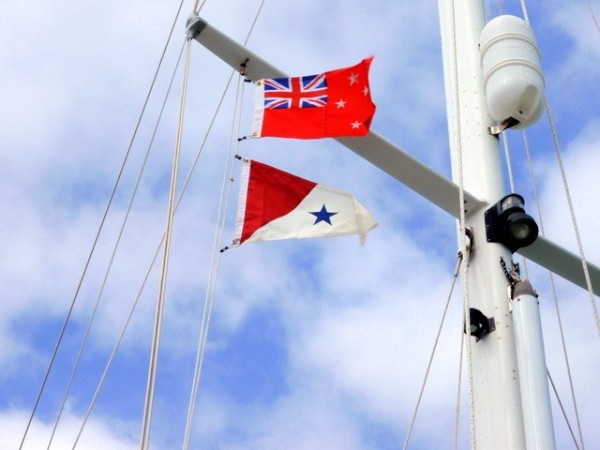 |
Our first stop, where we cleared into New Zealand, was Opua. Before moving south to Whangarei we visited some of the local sights.
17 Photos
Created 25 June 2013
|
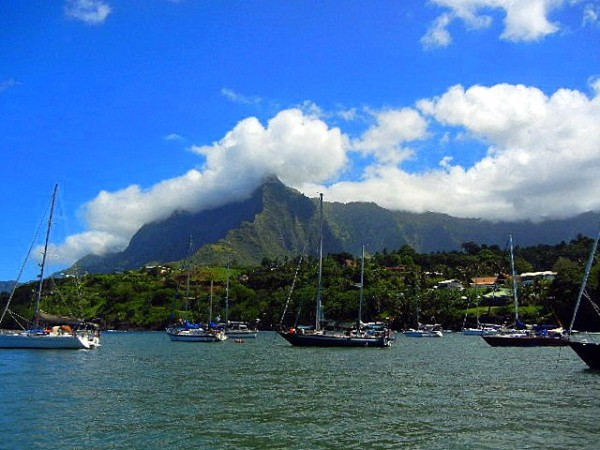 |
Hiva Oa was our first "Landfall in Paradise" after leaving Mexico, and our introduction to life in the islands of French Polynesia.
14 Photos
Created 6 August 2012
|
Sail Bright Angel
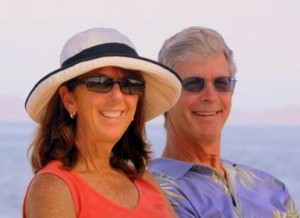
Who: Linda & Bob Hargreaves
Port: Olympia, WA
Current Position
Favorite Links
- John & Lisa on SV Orcinius
- Bill & Cat on SV Island Bound
- Bob & Ann on SV Charisma
- Chris & Rani on SV Ladybug
- Craig & Bruce on SV Gato Go
- Jon & Carol on SV Arnamentia
- Jon & Heather on SV Evergreen
- Ken & Beth on SV Eagles Wings
- Mark & Anne on SV Blue Rodeo
- Pat & John on SV The Rose
- Rich & Cyndi on SV Legacy
- Sail Bright Angel
